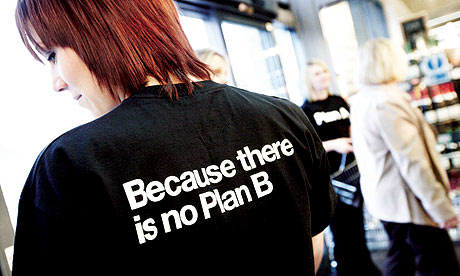Sustainability intern Linda takes over the blog once again and tells us what she thought of Dominic Fry’s lecture to the Business School on Marks & Spencer’s Plan A.
On March 7th, the Business School at University of Greenwich had invited Dominic Fry of Marks & Spencer to give a lecture on the company’s Plan A commitments and its 2015 plan of becoming the world’s most sustainable retailer. It was a great opportunity from students across disciplines to learn more about sustainability in retail, how to communicate such initiatives to consumers and get an idea of how corporate social responsibility (CSR) can be implemented in a large corporation. With a special interest in fashion supply chains, I was personally really excited to hear from such a significant and acknowledged UK clothing retailer.
Dominic Fry is the Director of Communications and Investor Relations at Marks & Spencer. Fry has 30 years of experience from PR and communications, and his impressive resume includes past director roles at J Sainsbury plc and ScottishPower plc. At Marks & Spencer, Fry is responsible for all internal and external communications and reports to shareholders and the chief executive.
Marks & Spencer is present in 42 countries and 1/3 of Britain’s population shops with Marks & Spencer once a week. Those are amazing figures, and it is evident that the supply chain of a retailer of such magnitude will have an impact on the environment as well as the people in the value chain. Fry emphasized how the global climate that we currently live in is the fastest it’s ever been: the phone calls made in all of 1998 is the same number of phone calls in 2012 made in a DAY! This fast-paced environment results in plenty of challenges for a big company, including food, health and safety, a growing population and naturally, climate issues such as global warming.
How does Marks & Spencer cope with the accelerating paces of today? Plan A was launched in 2006 to address issues such as climate change, fair trade and environmental issues. The plan comprised of 100 sustainability commitments, and 80 more were added in 2010. Some successes that have come about as a result of plan A include a 28% package reduction in food and clothing, 23% more energy-efficient stores and a 34% total waste reduction across sites and stores.
Sourcing decisions are especially interesting when talking about sustainability and CSR, as the sourcing strategy a company adopts has such a significant bearing on people and environment. We learned that Marks & Spencers suppliers are all accredited factories that have to abide by plan A principles and are audited independently on a regular basis. It even boils down to seemingly small situations like a needle dropping on the floor in a production line. In such an event, all operations need to be stopped to locate the needle so it can be removed! Moreover, having a growing number of ethical model factories in the supply base is also a huge focus for the company.
Plan A is about doing the right thing, but it is also about energy and cost savings. The extensive program was a 200 million pound investment, but has also saved the company 50 million pound resulting from more energy-efficient solutions. This goes on to prove that sustainability really can be hugely cost-efficient! Every Marks & Spencer shop has a “Plan A champion”, whose role includes being an advocate for Plan A, encouraging other staff members to follow correct procedures in for instance handling of waste and recycling and generally being an ethical and sustainable ambassador.
How does Marks & Spencer communicate all of these efforts to the consumer? Fry highlighted the important point of patience in such communications – it does take a really long time to get it across to customers. But as fair trading and sustainable sourcing should be long term commitments, it makes sense that it takes time to build up that trust with the customer as well. Going forward, one challenge is the online community and the potentials, and possible pitfalls, of social media. This is a resource that Marks & Spencers wants to utilize better in the future. Moreover, the company hopes to accentuate that part of its vision is their stand on social good. Just looking at last year’s riots, it is clear that there is a lot of anger in young people, dealing with challenges such as unemployment and rising tuition fees.
We found it to be a really inspiring lecture, and it’s nice to see that it is possible to make more conscious consumer choices on the high street. Next time you step into a Marks & Spencer’s, you might want to pick up a can of sustainably sourced tuna, a fair trade t-shirt or a 100% recycled polyester cushion?









